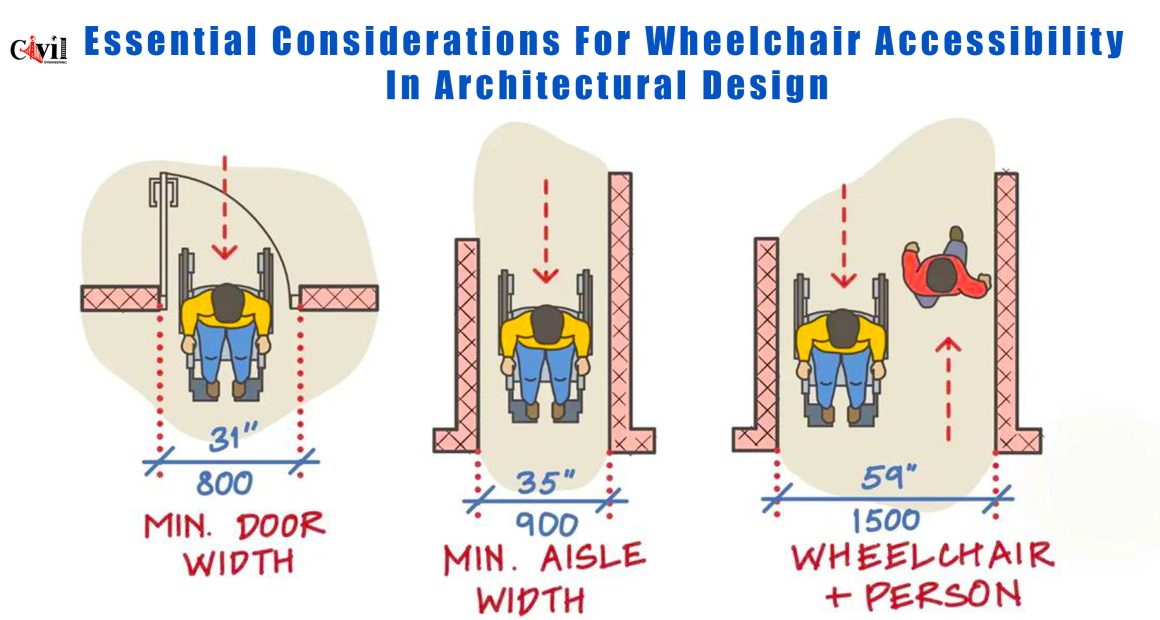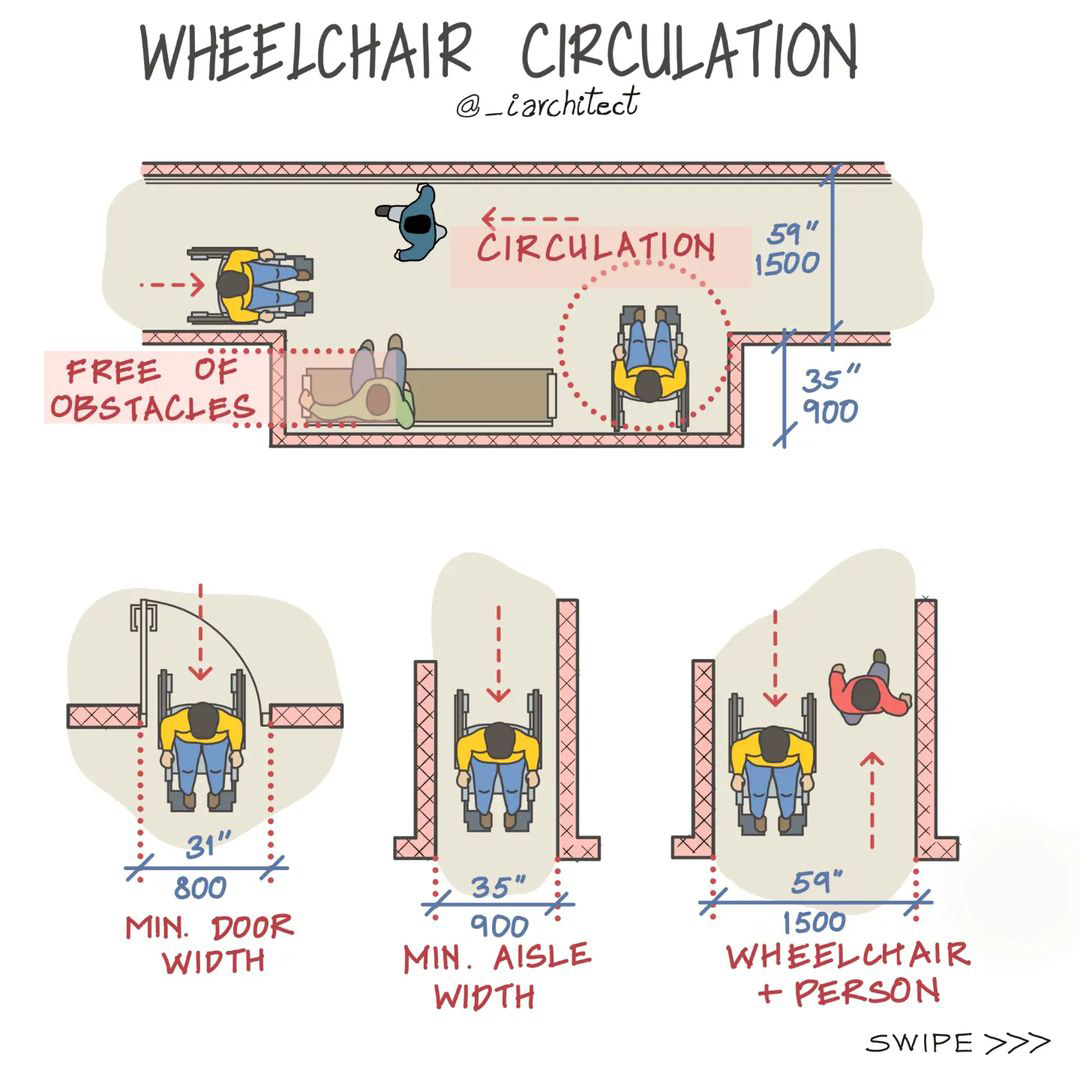When it comes to designing inclusive spaces, prioritizing wheelchair accessibility is essential. This guide highlights the key dimensions and clearances necessary to ensure comfortable wheelchair circulation in architectural spaces. Meeting these standards promotes independence and inclusivity for those with mobility challenges. Architects and students can benefit from these insights to create universally accessible environments.
Minimum Door Width for Wheelchair Access
An accessible entrance is the first step in creating a wheelchair-friendly space. To accommodate a standard wheelchair, doors should have a minimum width of 31 inches (800 mm). This width allows enough clearance for a wheelchair to pass through comfortably, ensuring that individuals can enter and exit spaces with ease. Keeping door width in mind during the design phase eliminates the need for costly adjustments later on.
Aisle Width: Ensuring Ease of Movement
Once inside, it’s crucial to provide sufficient space for wheelchair movement. The minimum recommended aisle width is 35 inches (900 mm). This dimension facilitates smooth navigation and reduces the risk of obstacles that might restrict mobility. Wider aisles also enhance accessibility for other mobility aids, such as walkers and scooters.
Circulation Space: Room for Maneuverability
One of the key factors in designing accessible spaces is allowing enough circulation space for wheelchairs. For smooth maneuverability, particularly in areas where individuals may need to turn around or adjust their positioning, a clearance of 59 inches (1500 mm) is recommended. This ensures that a wheelchair user and another individual can navigate the space without constraints, promoting a comfortable, inclusive environment.
Creating Spaces Free of Obstacles
In addition to meeting dimensional standards, keeping spaces clear of unnecessary obstacles is essential. Furniture, equipment, and other fixtures should not block pathways, especially in high-traffic areas. Maintaining a clutter-free environment not only makes navigation easier but also ensures safety for all users, regardless of their mobility level.
Designing with Accessibility in Mind
Incorporating these standards into architectural design promotes accessibility and convenience. Architects who prioritize accessibility can create spaces that cater to everyone, allowing individuals with mobility challenges to interact with their environment independently. Following these guidelines also contributes to compliance with accessibility regulations, demonstrating a commitment to inclusivity.
By adhering to these recommended dimensions and clearances, architects can play a vital role in shaping a more accessible built environment. The result is a space that’s welcoming, functional, and supportive for all users, including those using wheelchairs.
Proper Driveway Design: Ensuring Safety And Accessibility
Credit: architect







